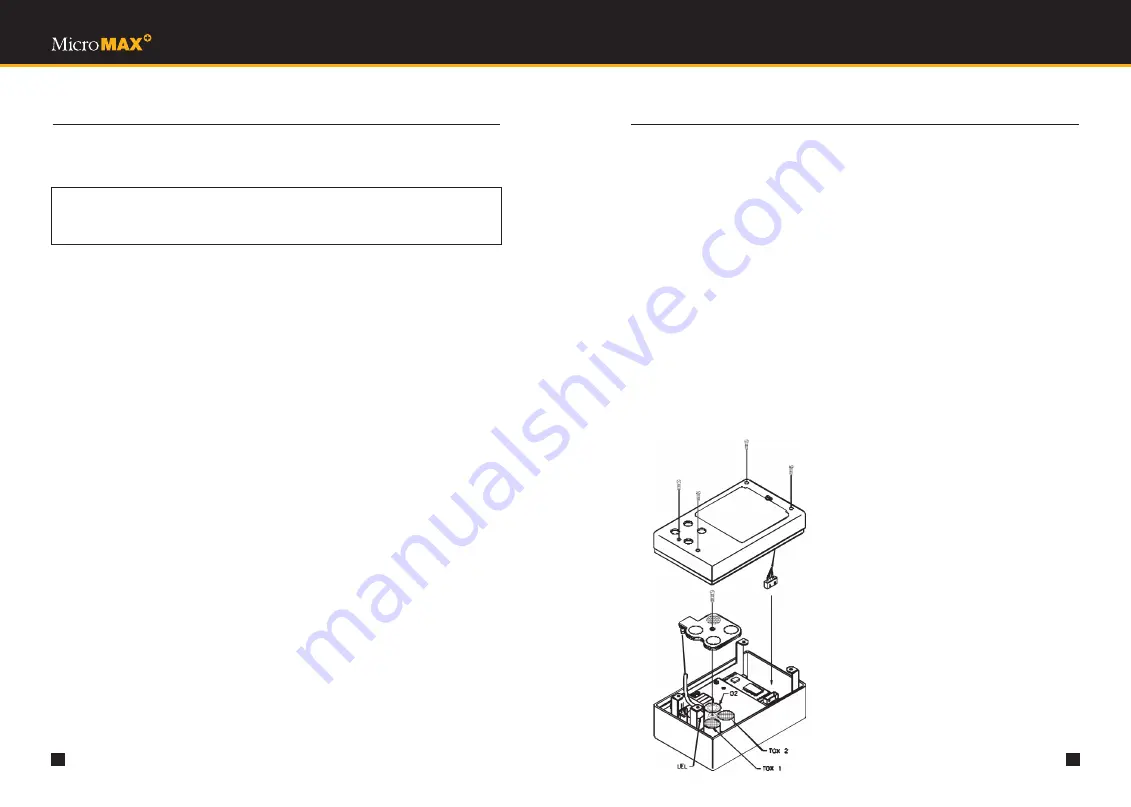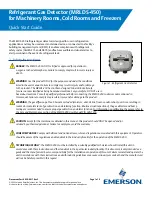
43
42
M U L T I G A S D E T E C T I O N
8.
MAINTENANCE
8.6 REMOVING AND ADDING A SENSOR
•
Adding a sensor. This involves increasing the number of sensors in the instrument.
For example, to add a fourth sensor to a three-gas unit, remove the plug, which is
located on the gas plate above the new sensor, so that gas is allowed to reach the
new sensor.
•
Removing a sensor. This involves reducing the number of sensors in the instrument.
In this event, it is necessary to insert a plug (Part number XIF936) in the gas plate to
prevent gas leakage where the vacated sensor no longer resides.
8.7 CLEANING
Clean exterior of instrument with a clean damp cloth. Do not use solvents, soap, polishes
etc., on the display.
8.8 PUMP INLET FILTER REPLACEMENT
If the inlet filter is clogged, the flow rate of the pump is decreased, and in severe cases,
the instrument will go into low flow alarm, or the pump can be heard to be struggling
under the increased load caused by the restriction.
To replace the filter, use tweezers to pull out the tubing and filter. Install a new filter (Part
number XIP604) and secure with 0.05” of tubing (Part number GFV194). The new filter is
held in place by the tubing (Part number GFV194).
8.9 SAMPLING HOSE MAINTENANCE
•
Check water trap (Part number GFV196), the spherical disc located near the middle
of the sampling hose, periodically to make sure it is clean and unobstructed. Replace
if necessary.
•
Check the porous dust cap (Part number 20HFC), located at the very end of the
sampling hose, periodically to make sure it is clean and unobstructed. Replace if
necessary.
CAUTION
If you are adding or removing a sensor, be aware of the following:
8.
MAINTENANCE
8.10 STORAGE
If the instrument will be out of service for more than 2 months:
1)
Charge NiMH battery pack.
2)
Remove NiMH or alkaline pack from instrument.
3)
Remove O2 sensor if more than two years old.
4)
Store the instrument in a contaminant-free area.
5)
Store the instrument at ambient temperature.
8.11 SENSOR & BATTERY DISPOSAL
The U.S. Environmental Protection Agency (EPA) governs the disposal of waste products in
the United States. EPA Regulations are listed in the code of Federal Regulations, CFR40,
entitled “Protection of Environment.” Individual states and local communities may also
establish regulations covering disposal of waste products. These may be more stringent
than Federal Regulations and may cover disposal of household waste, which is not
included in Federal Regulations. Thus, state and local agencies should be contacted for
their disposal requirements.
Figure 17
















































